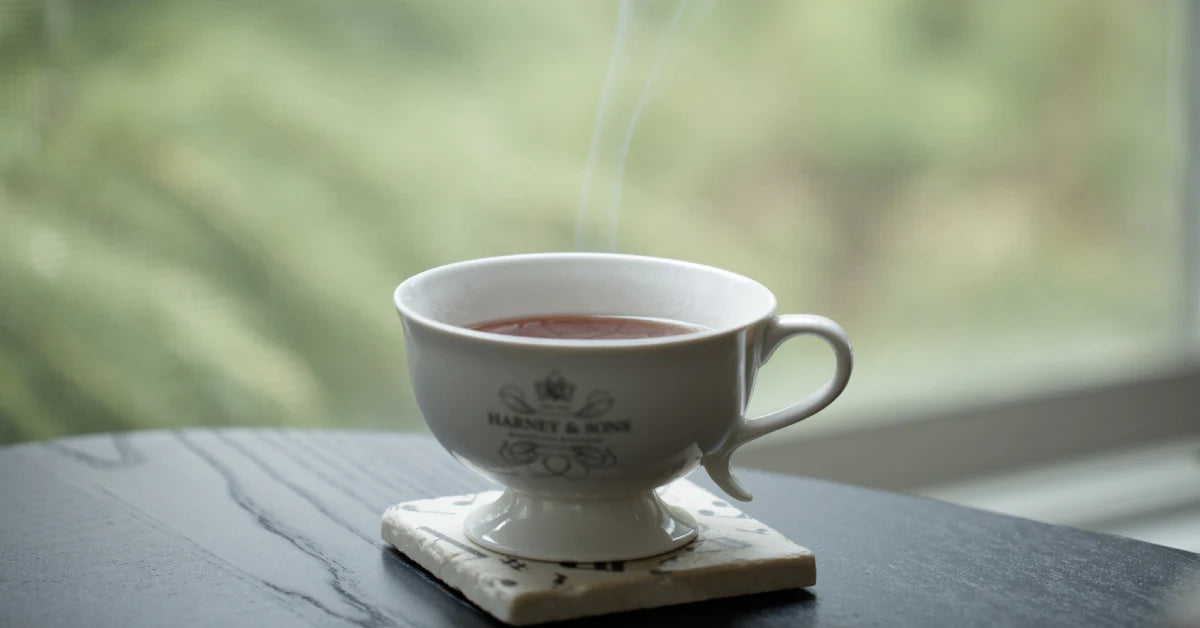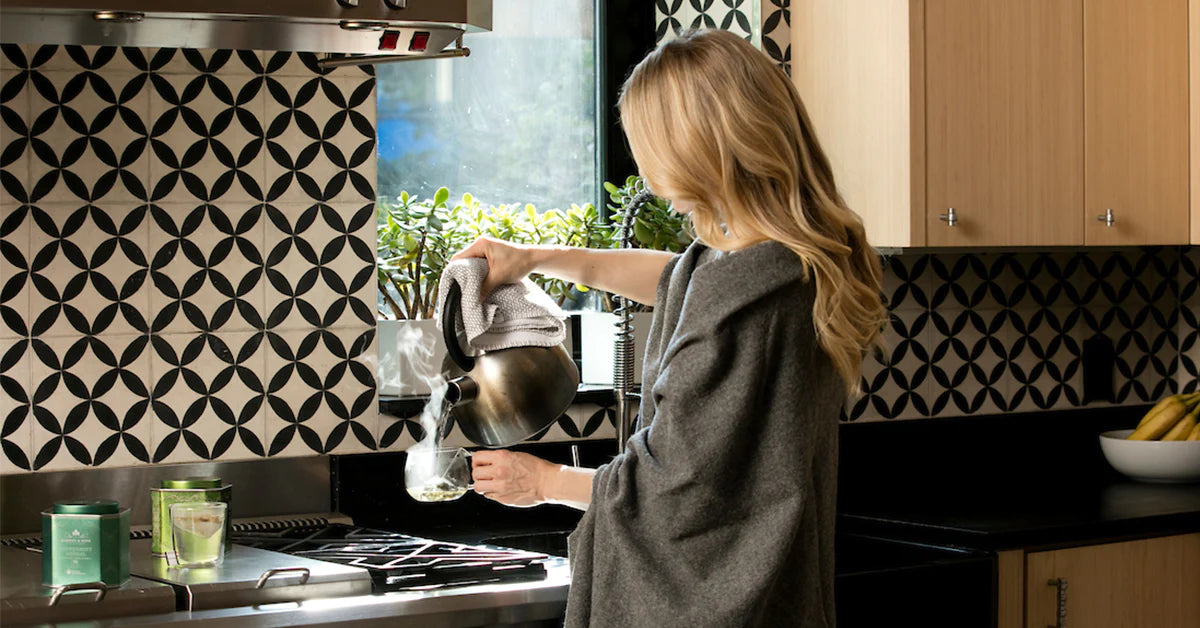Back in 1946, George Orwell, the British novelist, journalist, essayist, and critic best known for Animal Farm and 1984, turned his pen to the subject of tea. As a Brit, he most certainly had some passionate thoughts on how to make and take your tea -- and on how you should do it, too.
As a third-generation tea company, we Harneys have some thoughts on the topic of the proper way to make the perfect cuppa every time. Here are our 7 Rules for Making Tea. We think Mr. Orwell would agree with most if not all of them, although there were no microwaves in 1946 and he would advise against adding sweeteners no matter what. Stiff upper lip and all that.
Harney’s 7 Rules for Making Tea

-
Brew with fresh, pure water.
There is a favorite saying in the tea world: “Water is the mother of tea.” Hard, sulfurous water or chlorinated water all affect the taste of your tea. If need be, water should be filtered, unless you are fortunate enough to live near a spring; spring water is ideal!
-
Use fresh tea in good condition.
Tea should be stored in sealed containers away from the light in a cool place. Because tea picks up flavors and odors around it -- our founder, John Harney, would always say “tea is a blotter” -- keep coffee and spices away from your tea (see our blog on storing tea for more info). Even though it is dry, tea can become stale after an extended period of time. Remember to drink your tea; don’t waste it!
-
Steep properly at the right temperature.
Steeping is infusing water with tea. Pour hot or boiling water over your tea for the recommended time and at the correct temperature allowing the flavors to develop. Kettles like this Fellow Corvo Temperature Controlled Electric Kettle can be your cup of tea’s best friend.
White Teas: 175° F for 3 minutes
Chinese Green Teas: 175° F for 1-3 minutes
Japanese Green teas: 160° F for 1-3 minutes
Oolong Teas: 180° to 212° F for 1-5 minutes
Black Teas: 212° F for 5 minutes
Herbals: 212° F for 5 minutes
First Flush Darjeelings: 175° F for 3 minutes
-
Heat your tea water in a kettle rather than a microwave for a more accurate, even temperature.
Convection heat, the kind of heat that is generated when you heat water in a kettle, is the preferred method for making tea.
-
Taste the tea before adding sweetener.
You may discover that you prefer the natural flavor over a sweetened one. If you are in George Orwell’s camp, you will turn your nose up at adding sugar to your tea. “It would be equally reasonable to put in pepper or salt,” he said. We’re not sure we’d go that far, but consider trying the tea before adding something sweet to your cup.
-
To get the full flavor experience, slurp the tea into your mouth and let the flavor fill your mouth while the aroma fills your nasal cavity before you swallow.
This will allow you to experience all the subtle flavors that the tea contains. Sure, it’s loud and sounds a tad rude, but you’ll be surprised at how much more flavor you experience. You don’t have to drink the whole cup that way unless you’re trying to clear a room!
-
Try something new!
While we all have our tried and true favorites, give yourself the gift of trying a new tea every few weeks or months to see what else is out there that you might love! To kick off the new year, we’ve been featuring our Mind Your Body teas packed with ingredients like Chaga mushrooms, avocado, ginger, and turmeric that are packed with health benefits. Or perhaps this is a good time to give matcha a try. You know you’re matcha-curious. With over 300 varieties of Harney teas available, the choice is yours!



